ELIO PHOTOBOOTH
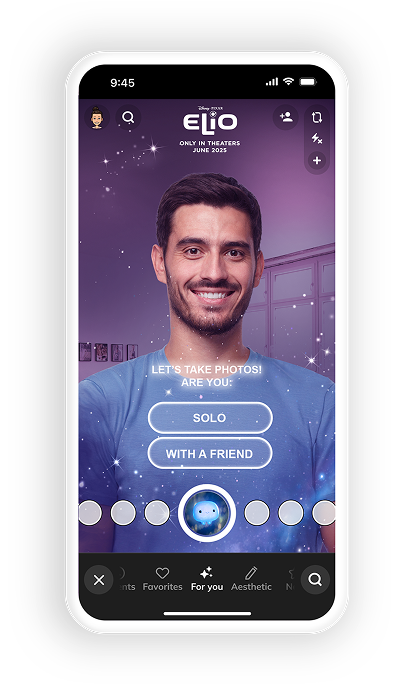
Experience Start
Disney projects are always extra exciting—full of color, joy, and a touch of magic. With vibrant elements, special effects, and stunning combinations of 2D and 3D assets, they turn every scene into a visual spectacle.
In this project, we designed a Photobooth experience for Disney’s Elio. Users could enjoy the booth alone or together with friends, capturing a fun moment and walking away with a delightful keepsake.
As usual, 2D assets were created using Adobe Illustrator, while custom effects were crafted in Adobe Photoshop. The goal was to encourage users to actively participate in the experience, share their photos, and help amplify engagement across platforms.
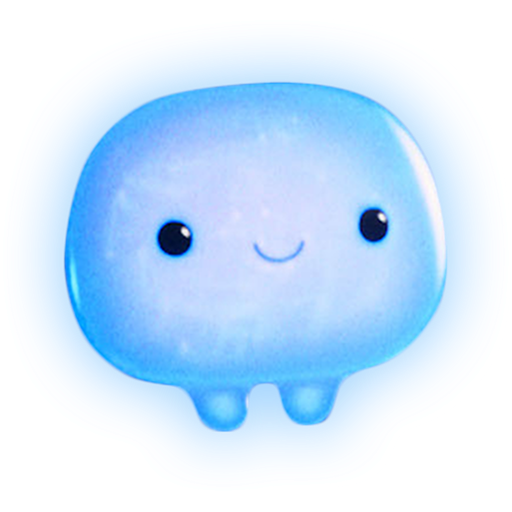

Through a series of carefully designed prompts, users are gradually introduced to the experience and guided into the scene. With the stage setup and visual cues, they begin searching for their “perfect pose”—one that captures the spirit of the moment.
Once the ideal pose is struck, a photobooth-style interaction is triggered. Users’ photos are taken and then transformed into a dynamic collage, making them feel like they’re truly part of the scene. This moment reinforces immersion and encourages playful self-expression.
The core aim of this project was to help users feel like Elio—to transport them into a cinematic, magical space. By blending storytelling with interactive design, we created memorable moments that left an emotional impression. As a result, many users felt inspired to go watch Elio in theaters, fulfilling one of our key campaign goals.






DORITOS
Start
To deliver an engaging game experience, we begin by introducing the concept through a playful prompt:
“Let’s hear you! Think you can do the best evil laugh?”
This sets the tone for the experience and immediately invites user interaction. Since the gameplay requires capturing the user’s voice, a microphone icon is displayed to inform the player and prompt them to participate.
All visual assets featured in this interaction—ranging from 2D illustrations to custom visual effects—were fully designed and refined by me. I used Adobe Illustrator to craft and import the illustrated elements, and Adobe Photoshop to enhance the scene with atmospheric effects. The overall visual direction was carefully tailored to evoke the spirit of Halloween, aiming to create a playful yet eerie ambiance that aligns with the theme of the game.
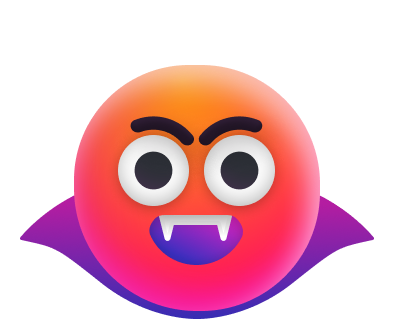
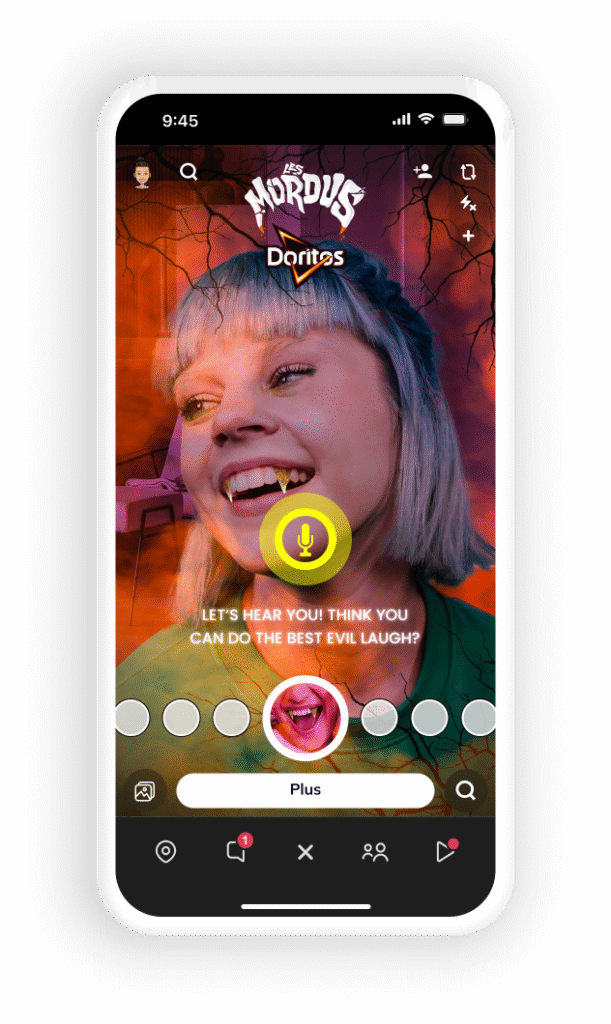
Gamification
To craft an immersive game experience, we first designed the scene using gamified UI elements. A custom “laugh meter” was introduced to rate the user’s evil laugh performance, adding a layer of fun competition to the interaction.
To further enhance engagement, motivational phrases were triggered after each laugh—designed to both challenge and amuse the user. These micro-interactions not only made the experience more playful but also helped the user feel like an active part of the stage, amplifying the sense of participation and energy throughout the game.

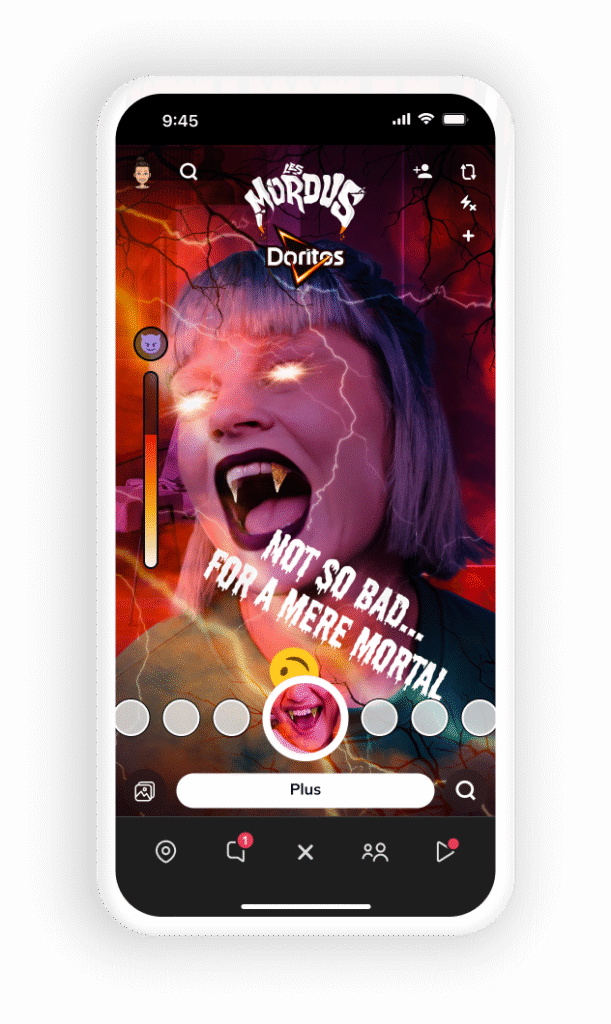
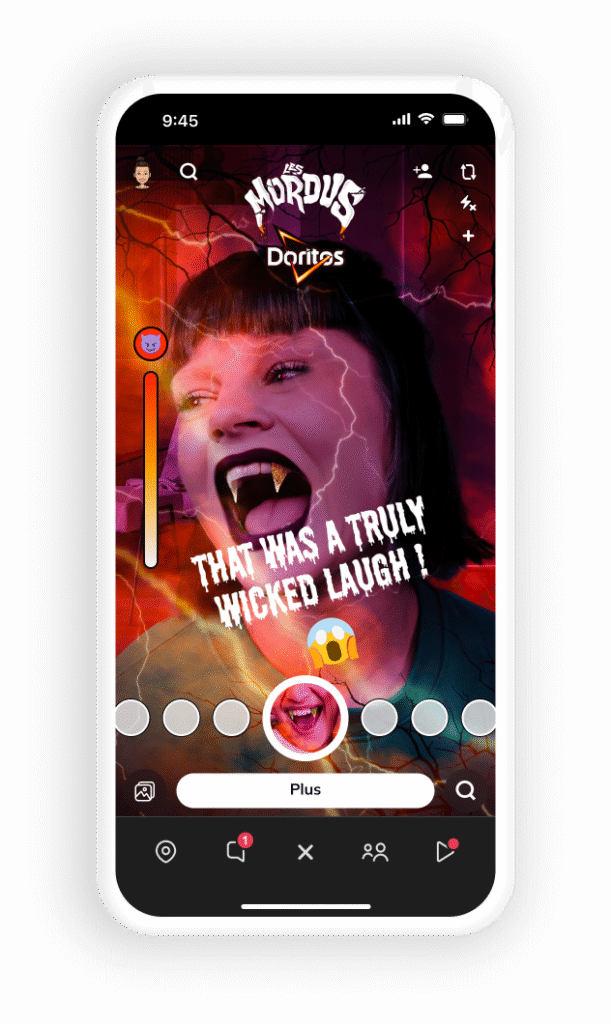
Ending
At the end of the game, we transition to a cleaner, more minimal screen by removing all in-game elements. This shift in visual focus allows us to present the marketed product directly and clearly. After showcasing the product and clearly communicating its purpose, the experience comes to a close.
In interactive experiences like this, the core objective is always to highlight the product and its relevance within a fitting narrative. By blending gamification with marketing, we stimulate the user’s curiosity and desire to engage with the product more deeply. That’s why we conclude the journey with a compelling call-to-action—encouraging users to try the product for themselves.
